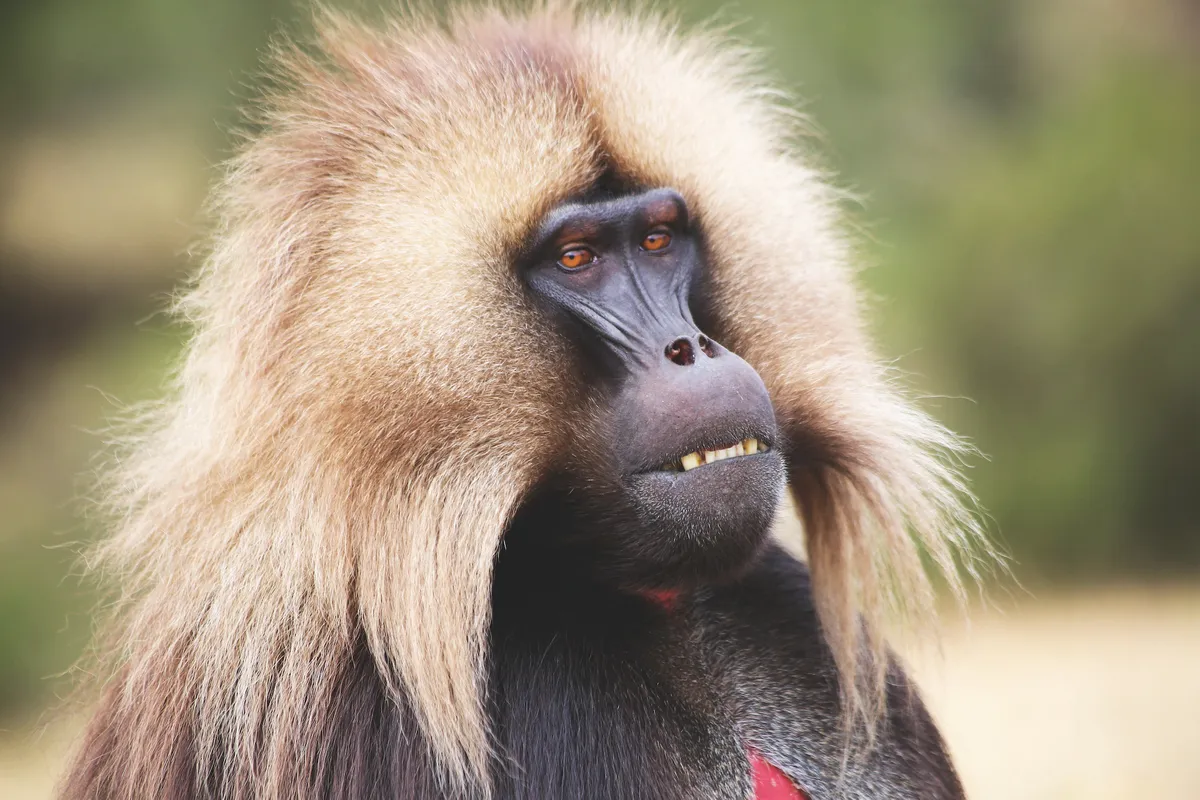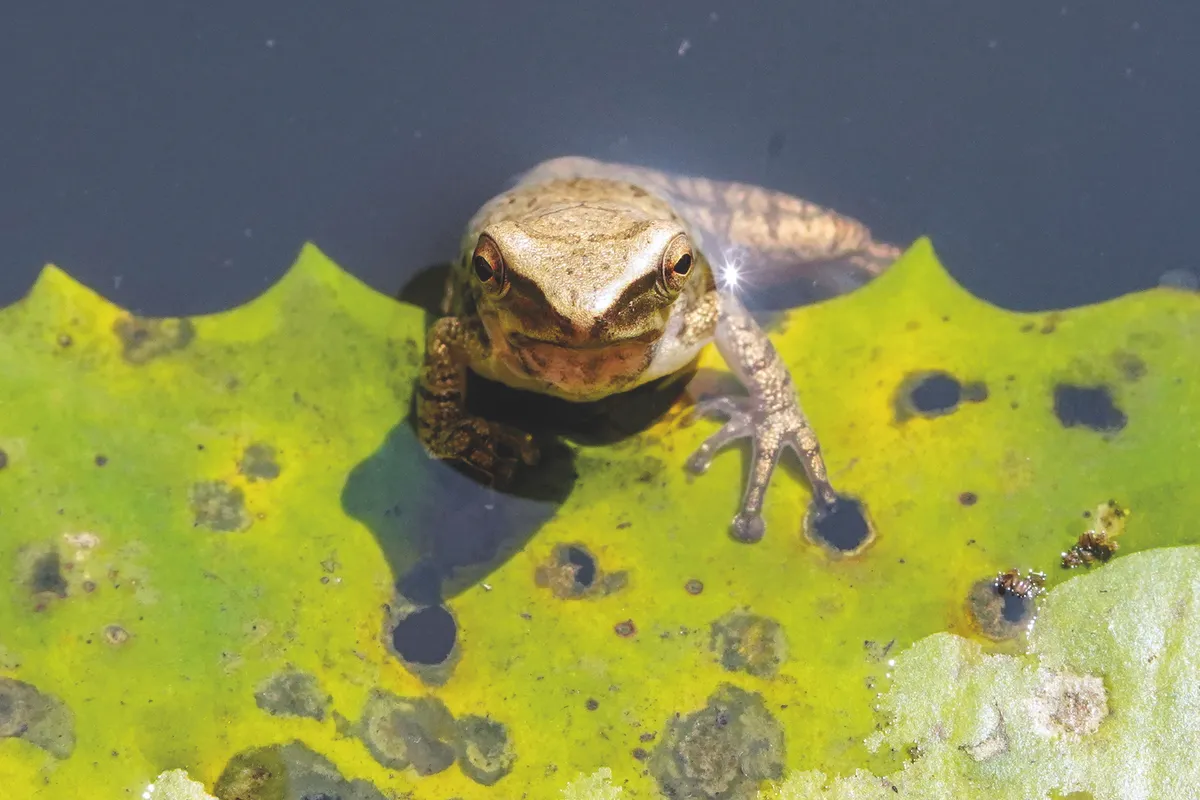Animals in the wild aren’t known for their willingness to take direction. This is a big part of the excitement of wildlife photography: animals are unpredictable and can move at any time, depending on their whim – whether that’s feeding, finding a mate, seeking shelter or caring for their young.
As models, a lion, frog or gorilla is unlikely to strike or hold a particular pose while you take their picture. They don’t care at all whether you get your shot. While the elements in a human portrait, such as physical positioning and setting, are usually a collaboration, with wildlife photography, the animal is in charge and it’s up to you to adapt and respond, and to do so quickly.
But in other respects, taking portraits of wildlife is similar to taking portraits of people. Eye contact, facial expression, head position, body language, lighting and background all make the difference between an unexciting image and an outstanding photograph that captures the spirit and character of your subject. Thinking about these kinds of details will enable you to take photos that are far more satisfying. Then, it’s just a case of grabbing the opportunity when it’s presented to you.
How to get a great animal portrait shot
Here are three key points to keep in mind when you're looking for the perfect animal portrait:

1. Great eye contact
The eyes make this picture. Eye contact with your subject makes for more expressive, even soulful, photos. Cameras allow you to choose your precise point of focus – when taking animal portraits, it’s always the eyes I focus on.
2. Sharp details
A lack of sharpness can ruin a photo. As this is a close-up portrait, I wanted to see the fine details. That meant picking my F-number carefully – too high and I might have got sharp definition on the eyes or snout, but blurring in other areas of the face.
3. A state of calm
You never want to make an animal feel threatened or stressed when you’re taking its picture. Getting this image meant keeping calm and quiet, maintaining a safe distance and taking my time, so that the lion was relaxed in my presence.
How to photograph wildlife
Want to learn more? Whether starting out in macro photography or entering the Wildlife Photograper of the Year competition, you'll find plenty of useful info in our wildlife photography hub.
Meercats put on a pose. © Thomas Peschak/Wildlife Photographer of the Year 2021
Eye contact is vital

Eye contact is vital for creating an image with impact, but don’t forget the focus – you want to show all of your subject’s features in exquisite detail. In this eye-catching portrait of a gelada monkey, we can admire the texture of its magnificent mane, the sinews under its skin and a row of slightly-bared teeth.
As with so much wildlife photography, there is rarely a set way of doing things. It’s all about making individual creative choices. Some of my favourite animal portraits, both my own and those of other photographers, have a symmetry to them, with the animal’s face straight-on and dominating the frame, and its eyes looking directly at the camera. These kinds of shots can look very proud and noble, especially with charismatic subjects such as big cats, elephants and gorillas.

When they start, many photographers are often content to just see an animal and get a picture of it, without giving much thought to how it really looks or how the shot might be improved. Yet there are endless creative options, from setting the animals in other spaces in the frame to taking the photo from a slight angle or from the side. Putting the extra thought into portraits means your results will be far more likely to do the animal, and you, proud.
More photography content:
- How to take great macro photographs of wildlife
- Why are there so few female wildlife photographers?
- How and where to see the Wildlife Photographer of the Year exhibition 2022
Macro of of a Sundew (Drosera rotundifolia). © Nature Picture Library
Three top tips for great portraits

1. Get down low
The top of an animal’s head, as seen from the top of a safari vehicle, is rarely its best angle. Getting eye-to-eye makes for more engaging pictures. If it’s safe, get your feet or chest on the ground. Avoid standing, even if you need to stay in a safari vehicle. Crouch down, lay flat or take the front passenger seat, which is usually lower than the raised back.
2. Look for light
Even a little light can make the difference between a vibrant photo and one that looks drab and flat. Think about which direction the light is coming from and where it’s falling. If the light isn’t working for the photo you want to take, move position or wait for the conditions to change.
3. Background check
If the animal’s face doesn’t fill the frame, think about what’s beside or behind it. Does the background add to the photo or distract from your subject? Having another safari vehicle in your shot, for example, destroys the feel of a ‘wild’ portrait. Create separation from other animals or objects. If the angle or the background doesn’t work, change position.
Main image credit: A lion portrait. © Graeme Green